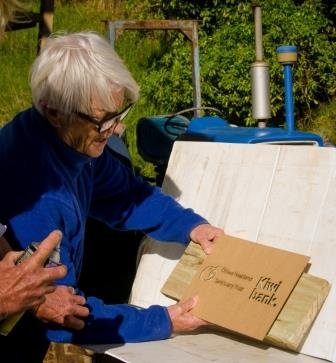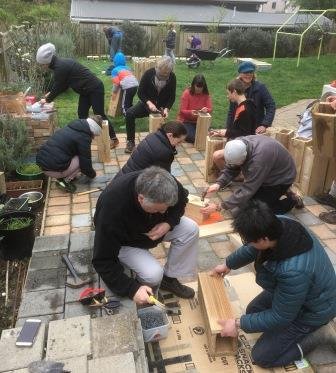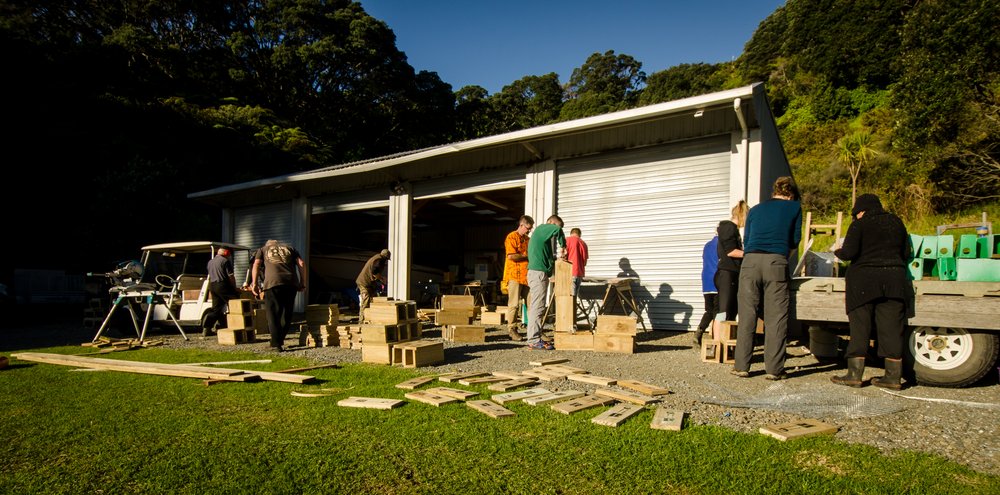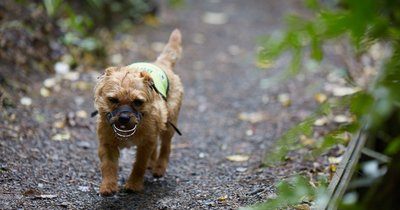We hear from Kiwibank Predator Free communities around New Zealand, united in their shared goal to help save our native species by taking action in their own backyards.
In the Wellington suburb of Newtown, a backyard trapper checks his own trap, then pops next door to check on his elderly neighbour’s trap as well. It’s a chance to say ‘hi’ and make sure she’s okay. This is just one example of how community trapping is helping to connect neighbours and build stronger communities.
Trapping is also giving neighbours a common interest to talk about. “It’s surprising who gets very proud of catching a rat,” says Gabe Ross, coordinator of Te Manu Waiata Project, otherwise known as Predator Free Sumner.
Karaka Bay in Auckland is a tiny community – just 10 households with a single accessway to the road above. Residents pass each other’s homes often on their way up and down the walkway, but since they’ve started working together to trap predators, there have been some other changes in the community too.
“I’ve lived here 15 years,” says trapping coordinator Mary Pearson, “And this is our first community project since I’ve been here. Since it started neighbours are sharing more, working more closely together. There’s a windy, hairpin path past the other houses up to the road, and now everyone waves and smiles. That’s been really good!”
In fact, for Karaka Bay, just the process of applying to be a Kiwibank Predator Free community helped bring their small community together.
“Having to make a video for our entry was good, because it got everyone in the community involved – all ages took part,” says Mary. “You don’t know what skills people have got!”
 It’s not just about putting a trap out the back and seeing what you catch. People are coming together for working bees to make trap boxes together. Volunteers are running sausage sizzles to meet their community and promote the predator free goal.
It’s not just about putting a trap out the back and seeing what you catch. People are coming together for working bees to make trap boxes together. Volunteers are running sausage sizzles to meet their community and promote the predator free goal.
Take Ohiwa for example. Ohiwa is a small seaside community with about 140 households, only a third of whom are permanent residents. Andrew Glaser helps coordinate Predator Free Ohiwa through his work with the Ohiwa Headland Trust. Andrew says,
“As an example of the commitment and interest, when we started trap-box making with our Kiwibank grant, 24 volunteers turned up to make 150 trap boxes in 8 hours!”
The Picton Dawn Chorus urban trappers opened a temporary ‘pop-up’ shop last year to promote and sell their Kiwibank-subsidised traps, while Predator Free Mt Cook/Newtown/Berhampore coordinator, Andrew Roxburgh is also seeing real benefits to his community.
“Working bees to make trap tunnels are a big community event and you get to know people quite well when you work together and share a cuppa,” he says.
Taking part in community gatherings is also helping neighbours get to know each other, Andrew reckons. “We had a table at the Mt Cook Spring Fling late last year. It’s a community get-together in the local reserve with stalls and games for the kids. We’ve held sausage sizzles at the Newtown New World Supermarket and had a table at the Newtown Market.”
The aim is to promote the benefits of being predator-free and get more locals involved. “We’re trying to spread the word to the community with leaflet drops and digital adverts on Facebook as well, but what works best for us is getting in front of people with a stand with tunnels and traps.”
Ideally one household out of every five in the community needs to be trapping in their backyard for that community to successfully get rid of introduced predators.
Kelvin Hastie, instigator of New Zealand’s first predator free community, Crofton Downs, emphasises that it’s not a big personal commitment. He reckons keeping things simple is the key to backyard trapping initiatives.
“The idea at the start was for people to have a rat trap in their backyard. It’s a simple way to help – not a big tax on your life – not a life-changing event. We stay in touch with people and talk as a community on a Facebook page. We gave everyone a mousetrap at Christmas to put in the tunnel behind the rat trap, because once the rats are gone, people start noticing mice more.”
 Andrew Roxburgh, from Newtown agrees that individual commitments add up in a community-wide effort.
Andrew Roxburgh, from Newtown agrees that individual commitments add up in a community-wide effort.
“Backyard trapping is only a small commitment individually – but collectively we can make a big difference.”
As more and more suburbs and communities join the predator free initiative, trapping areas widen and start to overlap – the next step on the Aotearoa/New Zealand’s journey to becoming free of possums, rats, ferrets, stoats and weasels by the year 2050. Already communities are beginning to help each other on that journey.
Gabe Ross from Predator Free Sumner has been working with other interested groups around Christchurch.
“I’ve given advice to a Christchurch school that wanted to apply for Predator Free Schools funding and talked to a group in Cashmere about getting started – what to do and what works,” he says. “Another group, the Summit Road Society is starting up a Port Hills-wide project. They’re aiming to help community groups get about 3000 traps installed along the Port Hills that border Christchurch and will serve as an umbrella organisation helping to distribute info and equipment.”
Gabe finds coordinating the Sumner group a rewarding process. “It’s been a fun process with participants across all age groups keen to get involved,” he says. “People are pretty enthusiastic, and we’ve had some very positive feedback.”
Those from other backyard trapping groups agree. “Mt Cook/Newtown is becoming a wilder place and that’s pretty cool,” says Andrew Roxburgh. “A workmate said that a kaka woke him up at 4am and my neighbours have complained that they’re getting woken by tui. It’s just generally exciting!” he adds.
“It stops conservation being something that’s far away. It’s not separate from normal life now. Every day should be a little bit special like that.”
To find out more about the Kiwibank Predator Free Community programme, check out the PFNZ website or read more about our conservation efforts. Want to join the challenge and start trapping in your backyard? You can buy a trap through PFNZ's shop and they'll deliver it to your front door!



